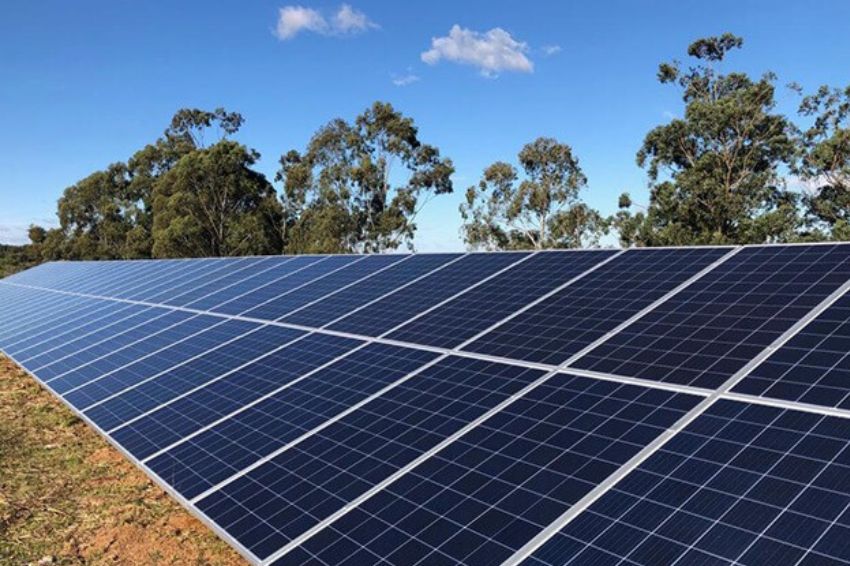In collaboration with Fernando Schmidt*
Much is discussed about high power modules be the natural path of the photovoltaic industry. The 300 Wp modules from 2018 and 2019 gave way to 400 Wp to 500 Wp modules in 2020 and 2021 and now we see the 600 Wp mark being reached.
Even though efficiency is quite stagnant in the range of 20 to 22%, the evolution is welcome, despite the area per panel increasing, costs with fixing structures are reduced, the size of modules in the string is reduced and the levelized cost of energy is also reduced (LCOE). For this to happen, it is natural for there to be an increase in either the current or the voltage (in some cases both).
To analyze the evolution of the systems, we compared one, with a high sales volume, from 2019 with a power of 5 kW to a similar one, but updated for the year 2022.
First we can analyze the module
|
Model |
JKM335PP-72 |
JKM530M-72HL4-TV |
|
Power (W) |
335 |
530 |
|
Isc/Imp (A) |
9,43/8,82 |
13,71/13,02 |
|
Voc/Vmp (V) |
46,1/38 |
49,35/40,71 |
|
Length x Width (mm) |
1956x992 |
2274x1134 |
|
Cell size (mm) |
158,75 |
182 |
|
Efficiency |
17,26% |
20,55% |
|
Power coefficient |
-0.38%/℃ |
-0.35%/℃ |
|
Voltage coefficient |
-0.31%/℃ |
-0.28%/℃ |
We saw how robust the technology has become with the adoption of 182 mm cells. Especially the increase in current needs to be analyzed with caution, this will directly affect the energy production of the system, as the inverter will limit the power if the 13.02 A is not supported.
The table also highlights the reduction in temperature coefficients, which allows for greater strings and less power loss due to temperature.
Not present in this table, but important to mention, is the degradation coefficient, which reduced enough for the manufacturer to increase its performance guarantee from 25 to 30 years.
As for inverters, from both periods, on the left, the one sold by PHB, in 2019, and on the right, in 2022. The number of strings and MPPTs remained the same for both.
|
Model |
PHB5000D-NS |
PHB5000T-DS |
|
Power (W) |
5000 |
5000 |
|
Imp (A) |
11 |
13 |
|
You (V) |
580 |
600 |
|
Starting voltage (V) |
120 |
80 |
The inverter, like the modules, has evolved in the main aspects. The input current increased, as did the maximum voltage. The inverter's starting voltage was thus reduced, allowing it to work with fewer modules or with lower irradiance, increasing its operating period and, consequently, the energy generated.
It can be immediately seen that the 2019 inverter, if used with the 2022 module, could cause a loss of system performance. This would always operate at a maximum of 11A. The power, in this case, under STC conditions would be close to 448W. It makes much more sense to work with the 335W Jinko to achieve the best system performance.
The system, previously mentioned, would be composed of the following items, considering a overpanneling minimum of 25%.
|
Model |
2019 |
2022 |
|
Quantity of modules |
19 |
14 |
|
String Configuration |
10/9 |
7/7 |
|
DC Power (W) |
6365 |
6360 |
|
You (V) |
461/414,9 |
345,45 |
|
Operating current (A) |
8,82 |
13,02 |
We observed that the system power remained practically identical, but required 5 fewer modules. The voltage level dropped by more than 100V and the current rose by almost 5A. This makes the choice of the inverter and modules to make up the photovoltaic kit essential.
Integrators must look for tailoring solutions to serve their customers, since each customer will have different needs, including: installation location, arrangement of modules in different orientations and inclinations, and budget. This will be reflected in different project choices, a correct choice of equipment can contribute to a satisfied customer and future referrals.
Inverters play a fundamental role exactly in this choice, with the penetration of bifacial modules, N-Type and 210mm cells we often find an imbalance with the currents.
It is no longer enough to multiply the quantity by the power of modules to find the power of the system. The maximum current supported by the inverter must be considered.
For these reasons, at PHB, we handpick the main brands of photovoltaic modules so that our integrators can get the most out of your system. We sell modules compatible with our inverters and only from the biggest global brands, with the highest scores in the main rankings.
All PHB solar equipment is sold exclusively on its own platform, access now.
* Electrical Engineer at PHB Solar, with a degree and master's degree in the area of Photovoltaic Systems and Energy Quality from the Federal University of Santa Maria (RS). He has worked in the photovoltaic generation sector since 2018, working on the development of Distributed Minigeneration and Energy Self-production projects. At PHB Solar, we work in the area of training and designing solutions for large photovoltaic plants.















